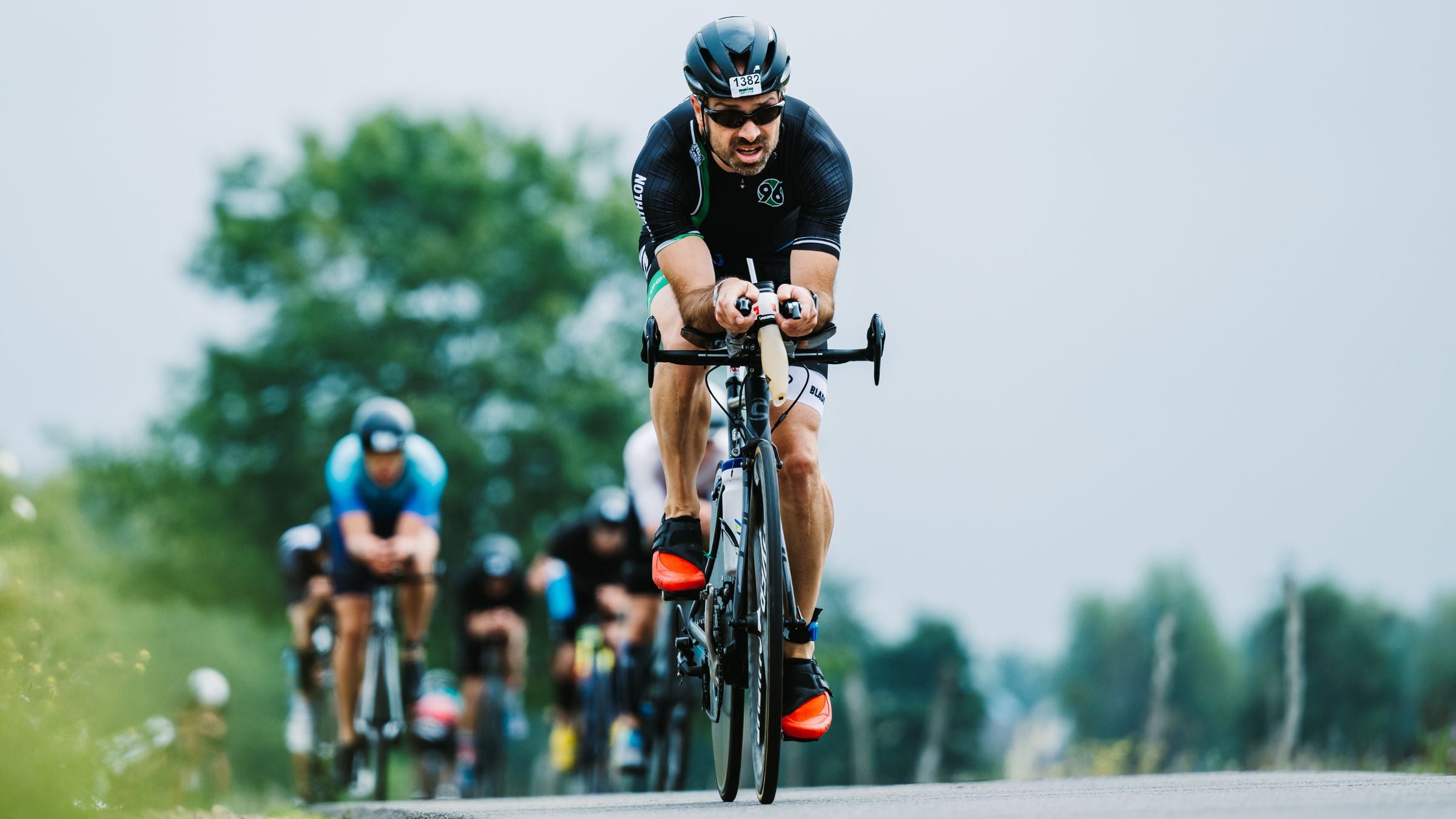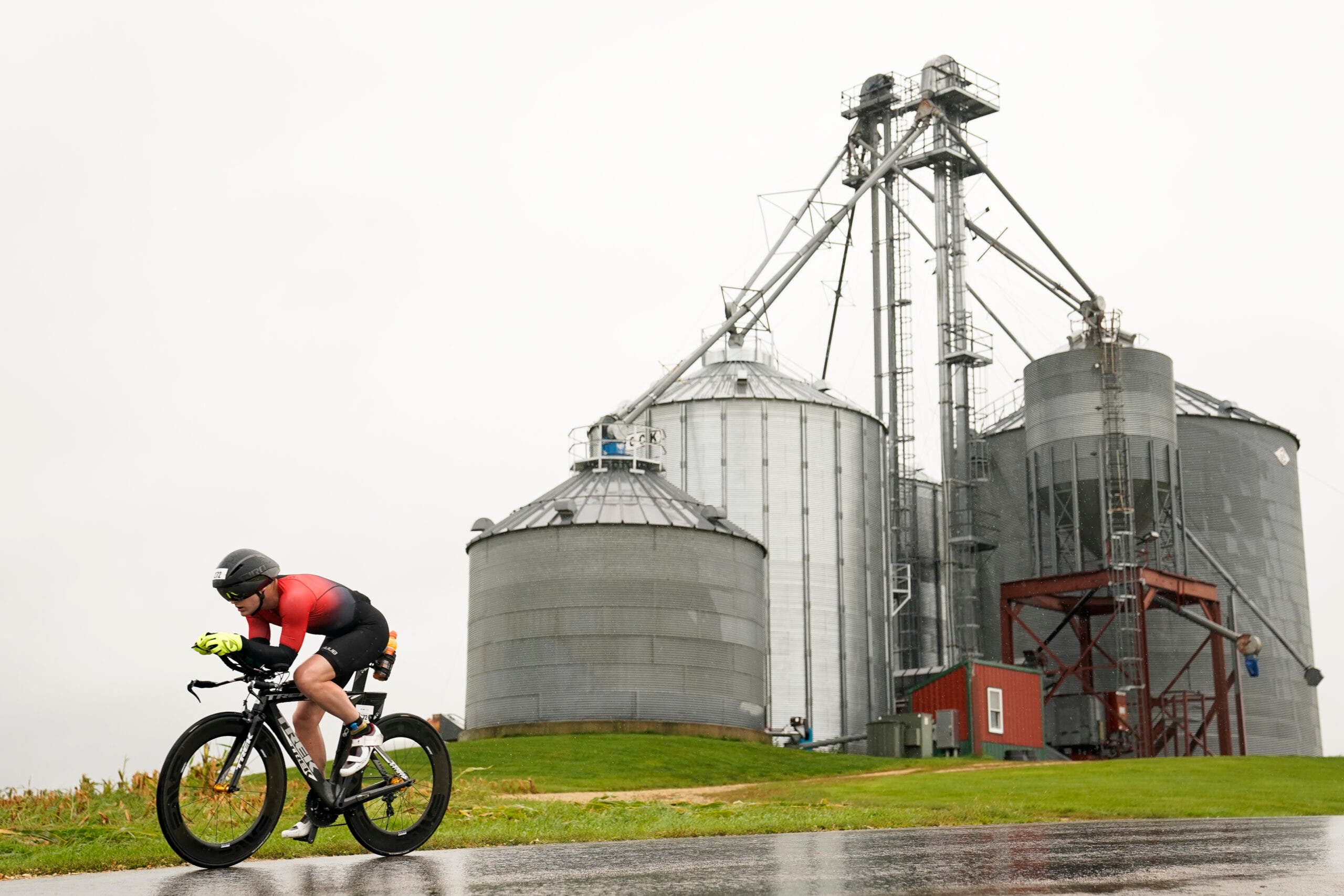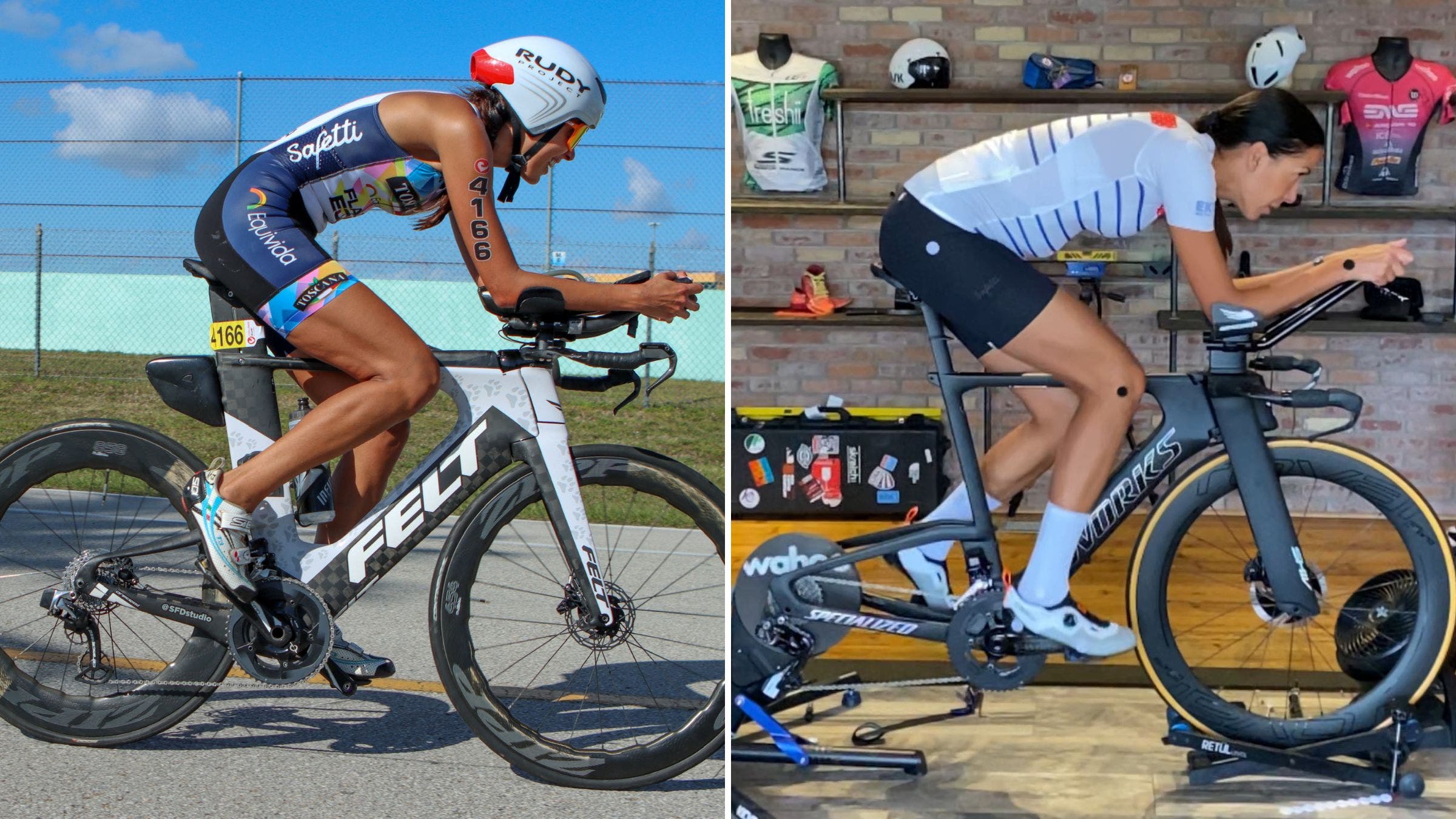Aero Position for Triathlon 101

(Photo: Alexander Scheuber/Getty Images)
Among the many weird things triathletes do in our sport (pee in a wetsuit, eat glorified mush, run around in spandex, etc.), one of the most weird-feeling is riding a bike in a semi-horizontal position.
That semi-horizontal position is what triathletes colloquially refer to as being “in aero,” and means that a rider’s elbows are resting on the arm cups of two aerodynamic extensions and their hands are outstretched, holding the ends of the two aerobar extensions.
We’ve seen some extreme aero positions over the years in both pros and age groupers looking to save watts and cheat the wind – but is this setup for everyone?
What does it mean to be aero?
While the fundamentals of being in an aerodynamic setup don’t change – elbows on arm cups, arms outstretched on the extensions – no two bike fits are the same. It is highly encouraged that if you’re considering making the move from upright riding (say, on a road bike) to mixing in an aero position that you consult with a bike fitter first.
Missy Erickson is the owner of Ero Sports Pennsylvania and a World Cup medalist. She’s fit hundreds of cyclists, including those who wanted to explore making their fit more aerodynamic, whether through adding clip-on aerobars to their road bike or by purchasing a triathlon bike with built-in aero extensions.
If you’re still unsure about what the aero position is all about, read our primer: Road Bike vs. Tri Bike: What’s The Difference?
In Erickson’s experience, being aero means finding a blend of comfort and efficiency.
“Your best aero position is the one where you are most efficient,” Erickson says. “To be truly aero is to find a blend of comfort and efficiency that allows you to have your maximal performance come race day.”
Erickson noted that it’s common to see athletes try to replicate the positions of other athletes they see, but that’s a recipe for disaster.

Why does aero position matter?
If you’re looking to take your triathlon game to the next level, one way to achieve free speed is to look into a more aerodynamic bike fit. In some tests, riders saved as much as 70 watts over 10 miles when they moved from an upright road bike position to an aerodynamically optimized one on a triathlon bike. Seventy watts is a lot of free speed and translates to multiple minutes in time savings. While each rider’s watt and time optimizations will vary when they move from a road bike to a tri bike, the data says that with an effective bike fit, being aero will reward the rider with time and less energy expenditure.
Fort Collins, Colorado-based Lexy Troup is a former collegiate swimmer who entered triathlon a few years post-grad as a way to find fitness and community after years of devoted swim training.
After her first sprint triathlon, Troup knew she wanted to tackle longer distances in the sport and that her commuter road bike wouldn’t suffice for hours in the saddle.
“My triathlon coach encouraged me to get a triathlon bike as I was prepping for my first half ironman,” Troup says. “He told me it would save me time and energy across the miles. I was a bit skeptical at first – as a swimmer, I was used to working so hard to shave even 0.5 seconds off a personal best, but the purchase of a tri bike paid off.”
Troup purchased her first tri bike a few months before her 70.3 and got a fit to accompany it.
She notes that her initial impression of the aero position was: “Dang, that looks painful.”
However, Troup was pleased to find out that with a couple of fits from trained bike specialists, aero position doesn’t have to be uncomfortable.
“Now that I’m training for my first full-distance Ironman, I actually find the aero position more comfortable than riding upright for my all-day rides,” Troup says. “I expend less energy in aero and can rest my upper body, unlike on a road bike, while in aero and make the most of downhills and flats.”
How low should I go in an aero position?
The lower or more “aero” an athlete goes, the more they decrease their hip angle (how much room your hip has to extend with each pedal stroke), need to crane their neck upward to see, and put their weight toward the front of their bike. All of these can lead to physical discomfort such as cramping and squirrely handling from putting too much mass on the handlebars.
Now – is it possible to achieve a very comfortable, very aero position? Absolutely. For those who have been in the sport and carefully evolved their bike fit over the years to match their flexibility, mobility, and athletic goals, a deeper aero position to earn some free speed may be attainable, but it’s likely not a healthy starting place for those new to a tri bike.
“The last thing you want to do is slam yourself into an impossibly deep aero position,” Erickson says. “I understand the allure of wanting to ‘look aero,’ but if you are so aero you can hardly hold your head up, you’re actually moving backwards in terms of power output.”
One of the key benefits of the aero position is that it allows air and wind to flow more directly over you instead of needing to find a way around you, like in a standard upright position.
“The last thing you want, especially for day-long rides, is to be a sailboat,” Erickson says. “When you sit upright, your torso and arms are essentially a sail that air gets caught in, slowing you down. Aero positions help eliminate some of that drag.”
Another plus of this awkward-looking position is that it actually can be more physically sustainable than riding upright, especially for long-distance races. Again, this is where an individualized bike fit will come into play. Without an expert eye on your fit, you can cause extreme discomfort and even injury by holding a DIY aero position.
How do I get “more aero”?
Even the pros don’t finesse their own aerodynamic setups; they rely on experienced bike fit specialists to do so.
If you’re beginning to think about purchasing a tri bike, consult with a bike fitter first. They can help take measurements before you invest in a new bike and ensure you go with the bike size and brand that will work best for your body’s physiology.
If you’ve already purchased your first tri bike, plan on a check in with a bike fitter every six months for the first year or so. Your body and your fit may change a lot in that time.
“If you’re training to change your body, like to lose weight or gain muscle mass, your fit will absolutely need to change in line with those physiological shifts,” Erickson says. “Even if you’re not looking to change your body, a change in training volume, like moving from short- to long-distance racing, will require check-ins over time to ensure your fit remains comfortable as the mileage ticks up.”
Before/after aero position bike fit

In the above photos, you can see how bike fitter Ivan O’Gorman adjusted the position of triathlete María Guerrero. In the first photo (L), Maria has:
- Higher back and higher head
- Flat arms and shoulders a bit far back
- Saddle looks a bit low
In the second picture (R) of Maria, you can see how the bike fit was adjusted for a better aero position:
- Flatter back and head more flush with neck/back
- Arms are elevated a bit, elbow/shoulder angles more comfortable for her
- Saddle height adjusted for comfort and hip angle efficiency
Although the aero bars are usually a dead giveaway, be sure to mention to the bike fitter that you are a triathlete. Any good fitter will take into account the fact that you need to run well off the bike and incorporate that knowledge into your aero setup, especially when it comes to saddle height and hip angle.
To find a bike fitter near you, ask local triathlon clubs or triathletes who they trust to dial in their aero positions. Google can also be your friend here, but word of mouth tends to be the strongest way to find a trustworthy fitter.
Getting comfortable in aero position
Aero is an awkward position no matter how you frame (or fit) it. It is unnatural for humans to sit on a bike while folded forward. At first, you might feel very pitched forward or as if you are draped over your bike and too stretched out. These are normal first impressions, but are still worth mentioning to your bike fitter during the initial bike fit.
Once your fit is dialed in, you should feel at ease in aero. You shouldn’t be using your core too much (i.e., tightening your abs for hours on end) to hold yourself on the saddle, and your hands shouldn’t be gripping the aerobars for dear life. You should be firmly seated on the middle or close to the nose of your saddle, with your hands gently but securely holding the aero bars.
The first few rides in your new aero position may leave you with a few sore muscles: your neck, shoulders, and glutes may be stiff by the end of a long ride. This is normal, so long as the pain is not debilitating or persists for many days after the ride.
Pain in the low back, hips, knees, or groin should be addressed with a fitter immediately as they are all indicators that something with the fit, such as saddle height or saddle style, needs to be addressed. Leaving these indicators to fester can result in nagging injuries or saddle sores.
When aero isn’t better
Aero is a position that is most beneficial on flats and non-technical downhills. Being in an aerodynamic position in these two scenarios allows the wind to flow over you, saving watts, and allows you to feel stable at the same time. You’ll want to keep your eyes looking ahead of the bike, not down between the bars, to scan the road for safety and awareness. When climbing, tackling a gnarly downhill, or faced with high winds, you should be on the base bars (i.e., the non-aerobars, where your brakes are) for safety.